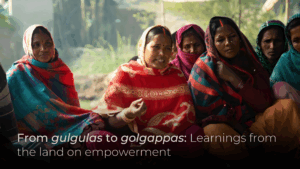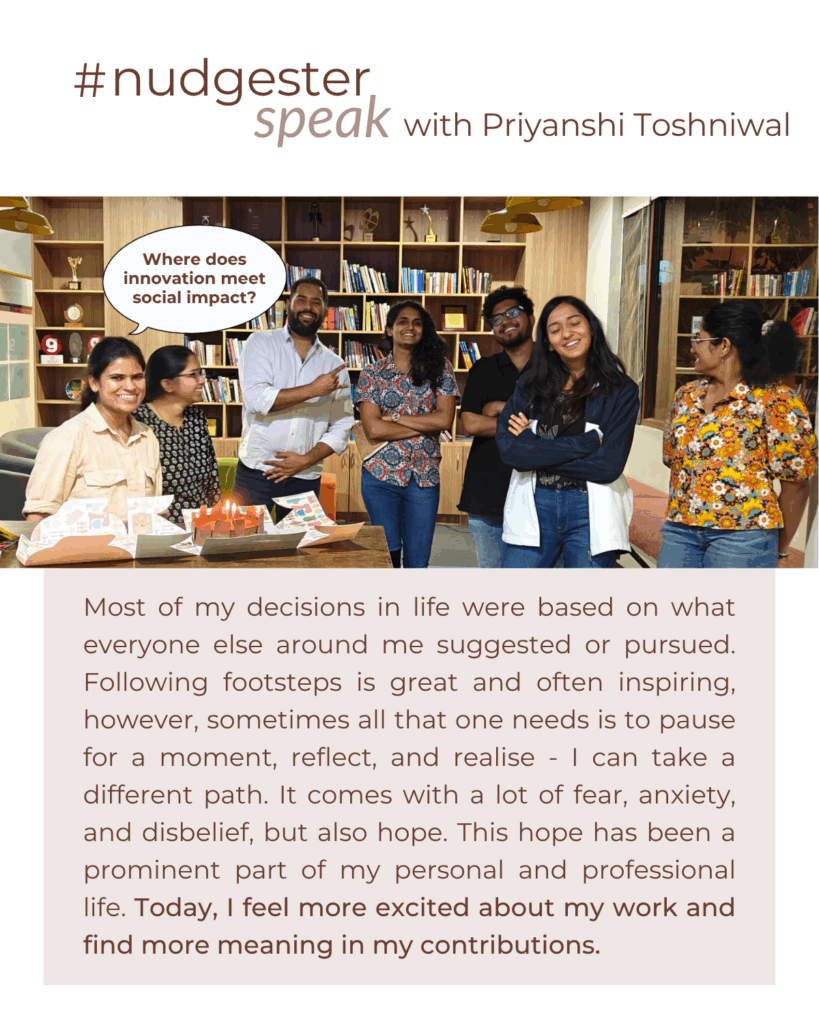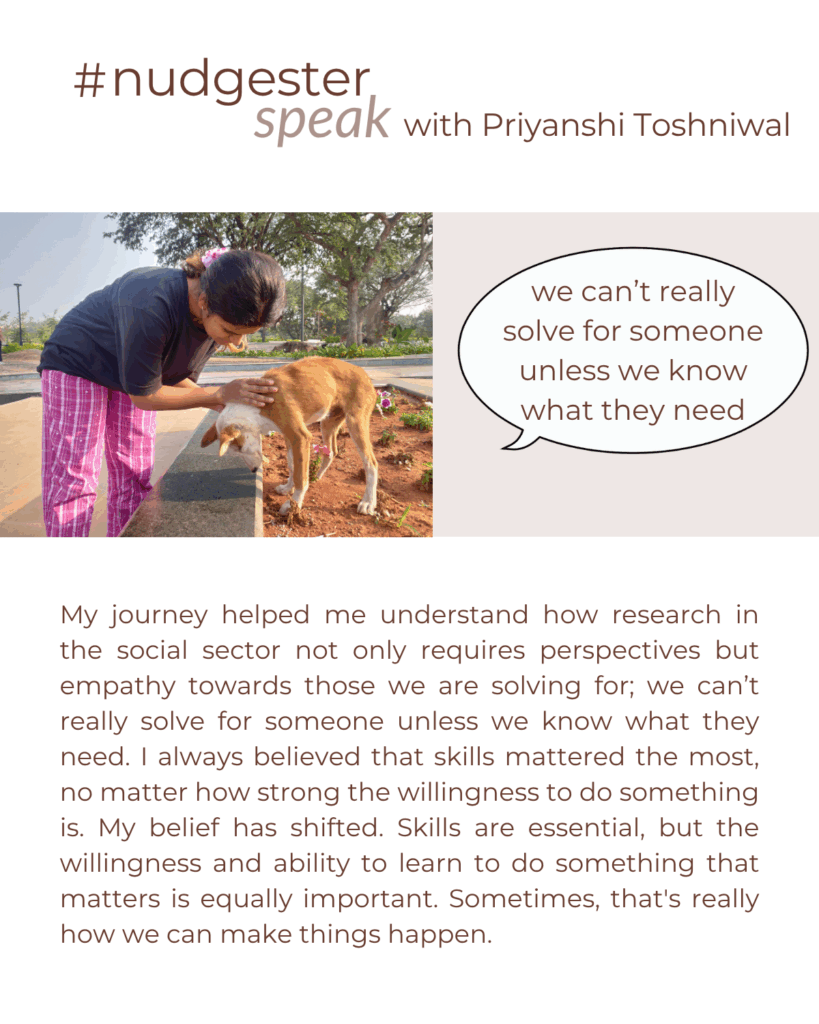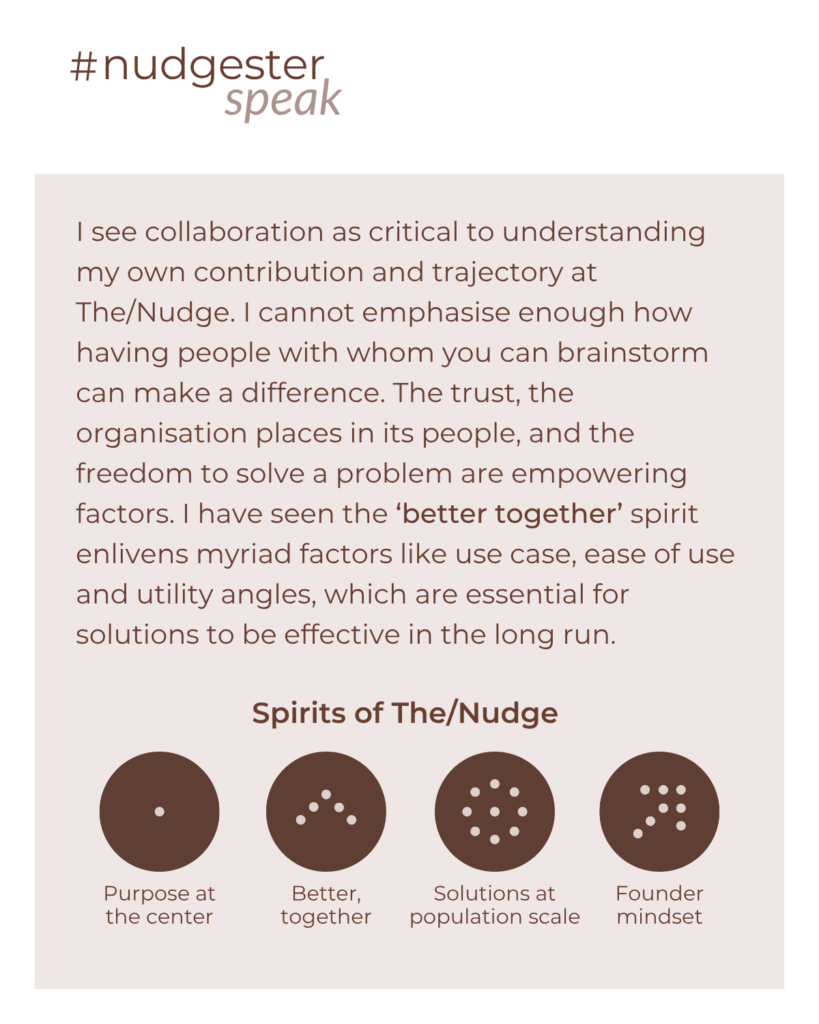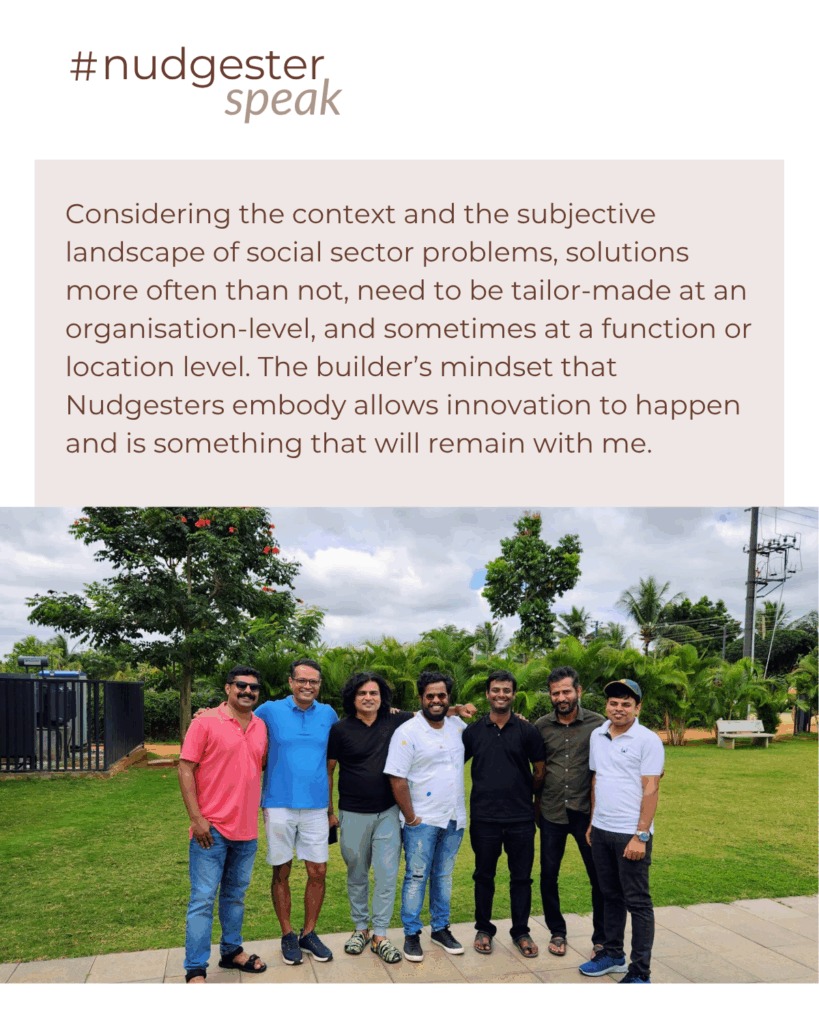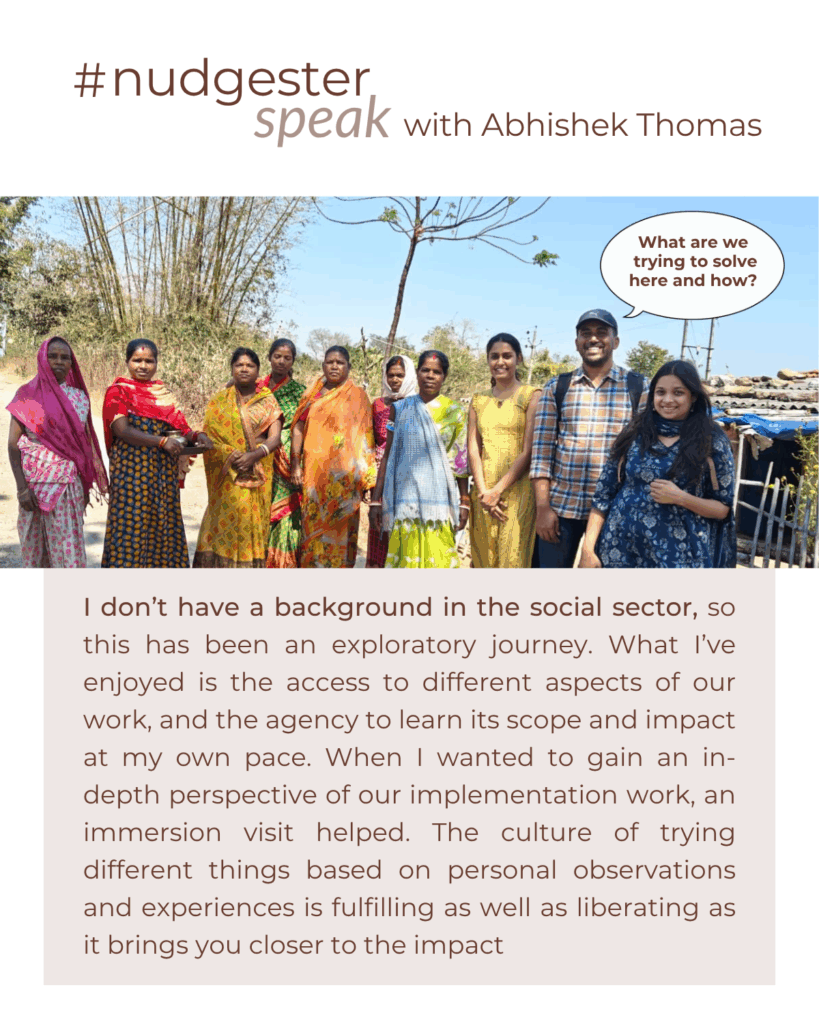Bisoni Marak lives atop a hillock across the paddy fields of Nimagaon in Shankargola Gram Panchayat, Bongaigaon district, Assam. Bisoni and her husband, both illiterate, work as daily wage labourers in neighbouring villages. Their earnings barely sustain their family of five, including their three children, the youngest being only 10 months old. During monsoon season, as the low-lying paddy fields flood, Bisoni’s family is cut off from the rest of the village, exacerbating their struggles.
Recently, Bisoni is a program participant in Assam State Rural Livelihoods Mission’s (ASRLM) SETU Project, along with a few other women from her village who are among the most excluded, like Bisoni.
Understanding the Economic Inclusion Program
The SETU Project is being implemented in partnership with the Economic Inclusion Program (EIP) of The/Nudge Institute, offering technical support to ASRLM. The project is implemented on the principles of economic inclusion program approaches like the graduation approach—a time-bound, multi-faceted, women-centric approach focusing on four pillars:
- Social protection
- Livelihood generation
- Financial inclusion
- Social empowerment
Through a 36-month intervention, this flagship DAY NRLM program housed under the Ministry of Rural Development aims to ensure economic inclusion for the most vulnerable households.
Socio-economic and environmental challenges
Assam is no stranger to natural disasters due to its location in the seismic zone V and its proximity to the mountainous territories of China and Bhutan. Flash floods and land erosion cause significant damage, disrupting the lives and livelihoods of remote villages.
In regions like Chirang and Bongaigaon, villagers often relocate to relief camps, making economic inclusion program implementation both challenging and essential. Integrating these families into the mainstream has been a gradual process.
Many are primarily engaged in casual wage labour in agricultural fields, nearby factories or work as domestic workers. A significant number do not have any alternative source of income and often live on just a meal a day, especially during the monsoons when labour opportunities decrease and mobility is restricted.
Providing localised, comprehensive support for vulnerable communities
Deprivation traps for such a diverse and unique setting demands an approach that can capture nuances and insights at local levels. The Economic Inclusion Program leverages Village Organisations (VOs) to deliver support. The VOs are trained to provide the households with social, financial, and psychosocial support as they undertake this 36-month journey.
SETU-Sarathis, or changemakers, handhold program participants like Bisoni to acquire life skills and technical knowledge to generate sustainable incomes. The program provides immediate financial support, links households to social security schemes, and offers training for diversified livelihood practices.
Financial support and skill development
The project is currently operational in two districts – Chirang and Bongaigaon, both severely impacted by environmental calamities, adding to the physical and economic vulnerability of those who are already the most vulnerable.
The program’s core principle is simple: those most excluded need an extra push to break through barriers to access and growth. This starts with the Consumption Support Grant—a one-time financial boost for households to meet immediate needs, like nutrition, medical care, or environmental support. This grant creates breathing room, allowing participants to focus on training and build skills for stable, sustainable livelihoods.
Given the benefits of direct cash transfer and to terminate pilferage, the state provides consumption support as cash transfer to identified households through their corresponding VOs. Following the cash transfer, the VOs carry out household entitlement linkages to various social security schemes and low-cost insurance.
Long-term impact and sustainable livelihoods
In the later stages of the program, participants and their households are guided to adopt diverse livelihood practices through intense hand holding and support from Village Organisations (VOs) and changemakers. This hands-on approach helps participants build skills and confidence, creating pathways to stable income sources.
SETU Project’s impact on families like Bisoni’s underscores the need for such targeted interventions. Empowering the most excluded can pave the way for more inclusive and progressive societies.


